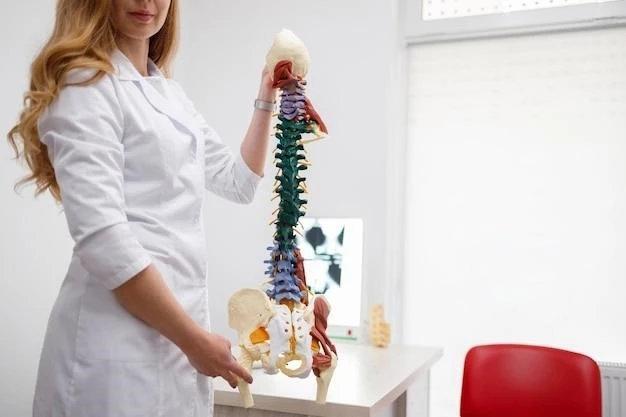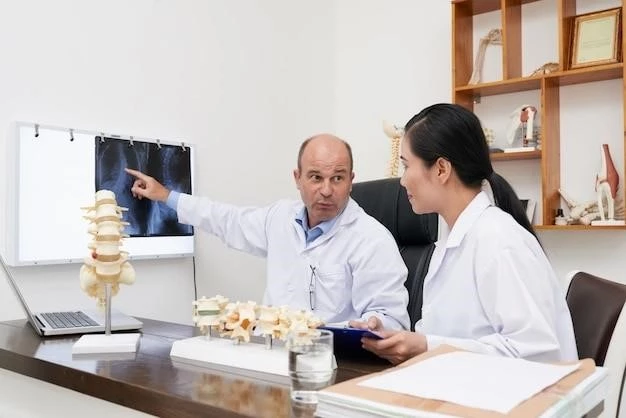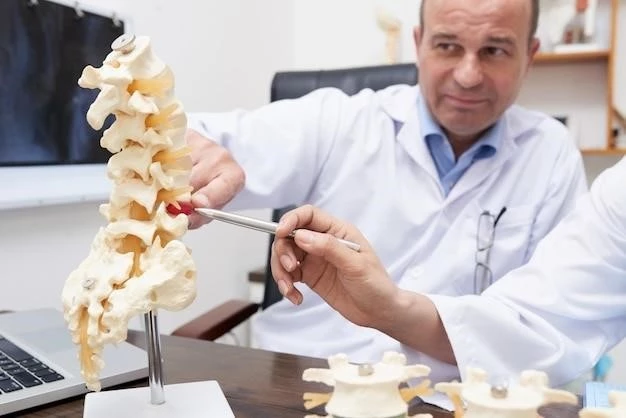Background⁚ Brachyolmia is a form of spondylodysplasia; sufferers have a short stature limited to the trunk that is recessively inherited. There may be other minor abnormalities in some cases.
Background⁚ Brachyolmia is a form of spondylodysplasia characterized by a short stature with trunk limitation. It is linked to genetic mutations that affect bone development‚ such as TRPV4 and PAPSS2 gene mutations.
Definition and Background
Spondylodysplasia brachyolmia is a genetic skeletal disorder involving limited short stature‚ trunk limitations‚ and bone development mutations.
Autosomal Dominant Brachyolmia
Autosomal Dominant Brachyolmia‚ the mildest form among the TRPV4 skeletal conditions‚ is characterized by mild short stature without limb involvement‚ owing to genetic mutations affecting bone development.
Autosomal Recessive Brachyolmia
Autosomal Recessive Brachyolmia is a genetic skeletal disorder characterized by short-trunked short stature‚ platyspondyly‚ and scoliosis‚ often associated with gene mutations affecting bone development‚ such as PAPSS2 gene mutations.

Clinical Features of Spondylodysplasia Brachyolmia
The clinical features of Spondylodysplasia Brachyolmia include short-trunked short stature‚ platyspondyly‚ and scoliosis as prominent characteristics. Additional abnormalities may also be present.
Short Stature and Trunk Limitation
Spondylodysplasia Brachyolmia is typically characterized by short-trunked short stature and limited trunk mobility‚ often accompanied by skeletal abnormalities such as platyspondyly and scoliosis.
Associated Abnormalities
In addition to short-trunked short stature and trunk limitations‚ individuals with Spondylodysplasia Brachyolmia may exhibit skeletal abnormalities like platyspondyly‚ scoliosis‚ and other related spinal anomalies. These associated abnormalities play a crucial role in the clinical presentation and diagnosis of this genetic skeletal disorder.
Genetic Basis and Mutations
Genetic mutations like TRPV4 and PAPSS2 are associated with spondylodysplasia brachyolmia‚ impacting bone development and potentially leading to skeletal abnormalities.
TRPV4 Gene Mutation
The TRPV4 gene mutation is implicated in autosomal dominant Brachyolmia‚ affecting bone development and leading to skeletal anomalies such as kyphoscoliosis and irregular cervical vertebrae.
PAPSS2 Gene Mutation
The PAPSS2 gene mutation is associated with certain types of brachyolmia‚ such as spondylodysplasia. This mutation can lead to skeletal abnormalities and potentially premature pubarche in affected individuals.
Radiographic Features
Individuals with Spondylodysplasia Brachyolmia typically display radiographic features such as irregular endplates‚ rectangular vertebral bodies‚ and narrow intervertebral discs‚ alongside precocious calcification of rib cartilages and short femoral necks.
Vertebral Abnormalities
Radiographic assessment of individuals with Spondylodysplasia Brachyolmia typically reveals irregular endplates‚ rectangular vertebral bodies‚ narrow intervertebral discs‚ precocious calcification of rib cartilages‚ and short femoral necks. These vertebral abnormalities play a crucial role in diagnosing this genetic skeletal disorder.

Diagnosis and Differential Diagnoses
Diagnosing Spondylodysplasia Brachyolmia entails assessing clinical features like short-trunked short stature‚ platyspondyly‚ and scoliosis. Differential diagnoses may include achondroplasia and various other skeletal dysplasias with similar radiographic findings.
Differential Diagnoses
When diagnosing Spondylodysplasia Brachyolmia‚ it’s vital to consider differential diagnoses such as achondroplasia‚ spondylometaphyseal dysplasia‚ and Morquio syndrome due to their similar radiographic findings and overlapping clinical features. Accurate differential diagnosis is crucial for proper management and treatment planning.
Management and Treatment Approaches
Management of Spondylodysplasia Brachyolmia involves a multidisciplinary approach focusing on addressing symptoms‚ supportive care‚ physical therapy‚ and potentially surgical interventions. Regular monitoring and individualized treatment plans are essential for improving quality of life and managing associated complications.
Multidisciplinary Care
Effective management of Spondylodysplasia Brachyolmia involves a comprehensive multidisciplinary approach that combines various medical professionals‚ including orthopedic specialists‚ physical therapists‚ and genetic counselors. The coordinated effort aims to address the unique needs of individuals with this genetic skeletal disorder‚ provide tailored treatment strategies‚ offer supportive care‚ and optimize overall quality of life for patients.
Research and Recent Findings
Studies on spondylodysplasia brachyolmia have identified TRPV4 and PAPSS2 gene mutations as key contributors to bone abnormalities‚ aiding in understanding the genetic basis and potential treatment targets for this rare genetic skeletal disorder.
Genetic Studies
Research studies on spondylodysplasia brachyolmia have focused on identifying genetic mutations‚ such as those in the TRPV4 and PAPSS2 genes‚ to understand the underlying causes of bone abnormalities and spinal defects in individuals with this rare genetic skeletal disorder. These genetic studies contribute to advancements in diagnosis‚ treatment approaches‚ and potential therapeutic targets for managing spondylodysplasia brachyolmia.
Prognosis and Long-Term Outcomes
Prognosis and long-term outcomes of Spondylodysplasia Brachyolmia vary based on individual factors‚ disease severity‚ and management strategies. Regular monitoring and appropriate treatment can help manage symptoms and potentially improve the quality of life.
Impact on Quality of Life
Spondylodysplasia Brachyolmia can significantly impact the quality of life due to physical limitations‚ skeletal abnormalities‚ and potential health complications. Proper management and supportive care are essential in improving the overall well-being and functional abilities of individuals affected by this rare genetic skeletal disorder.
Epidemiology and Prevalence
Spondylodysplasia brachyolmia is a rare genetic skeletal disorder with variable prevalence rates across different populations‚ typically characterized by short-trunked short stature and skeletal abnormalities affecting the spine. The condition may be underdiagnosed due to its rarity and diverse clinical presentations.
Incidence Rates
Spondylodysplasia brachyolmia is considered a rare genetic skeletal disorder‚ making accurate estimates of its incidence rates challenging. However‚ the condition is recognized for its distinct clinical features‚ including short-trunked short stature and skeletal abnormalities‚ which aid in its identification and diagnosis within affected populations.
Support Resources for Patients and Families
Patients and families affected by Spondylodysplasia Brachyolmia can benefit from patient advocacy groups providing support‚ resources‚ and information on the condition‚ connecting individuals facing similar challenges‚ and facilitating access to specialized care and services. Patient advocacy groups play a crucial role in offering assistance and guidance to patients and families navigating the complexities of this rare genetic skeletal disorder.
Patient Advocacy Groups
Engagement with patient advocacy groups is essential for individuals and families impacted by Spondylodysplasia Brachyolmia. These groups offer valuable support‚ information‚ and connections to facilitate understanding‚ coping mechanisms‚ and access to specialized care for those affected by this rare genetic skeletal disorder.
Future Directions in Spondylodysplasia Brachyolmia Research
Future research in Spondylodysplasia Brachyolmia aims to delve deeper into understanding the underlying genetic mechanisms and molecular pathways associated with the condition. By exploring these aspects further‚ researchers hope to uncover novel therapeutic targets‚ improve diagnostic tools‚ and enhance treatment strategies for individuals affected by this rare genetic skeletal disorder.
